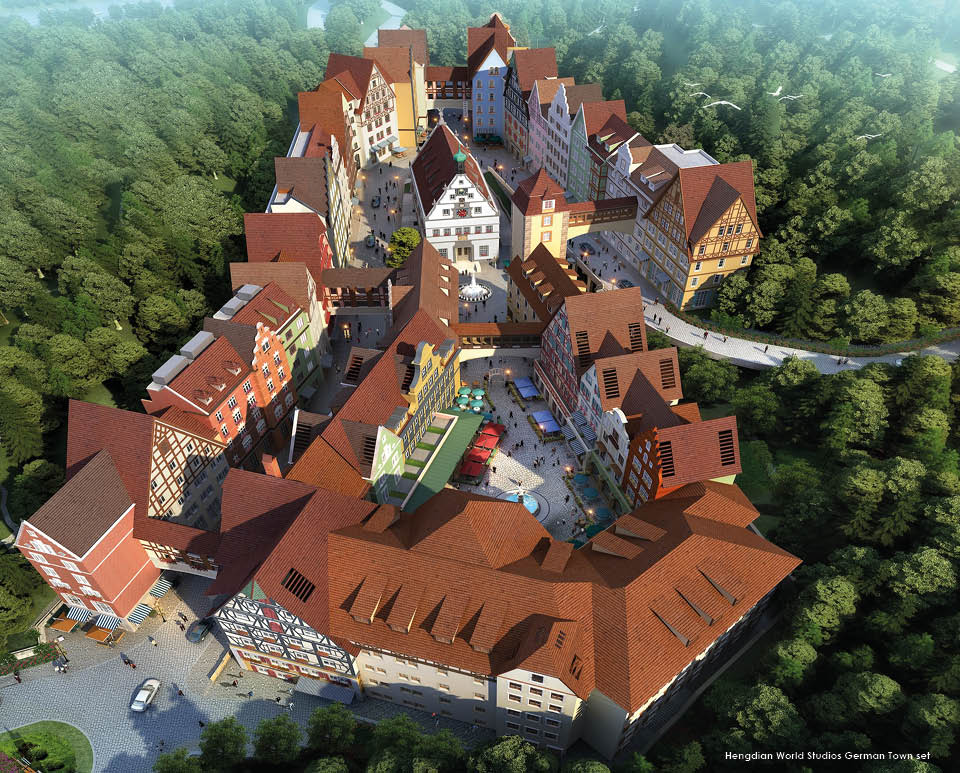
The serialised vertical drama boom has set off a race for facilities that can accommodate compact sets, lean budgets and accelerated schedules.
A space race has begun for vertical drama production facilities. As projections for the global serialised vertical video industry balloon to US$26 billion by 2030, the race to raise quality, offer the most variety with the least effort, squeeze time to screen, and keep costs at a fraction of traditional TV production is escalating.
The top two contenders are Hengdian World Studios – sometimes called ‘China’s Hollywood’ – and a newcomer backed by China-listed vertical video powerhouse, the COL Group. Elsewhere across Asia, studios are adding features and functions, but nothing so far compares to the muscle behind China set-ups.
Last month, COL announced plans for Hengqin in China’s Greater Bay Area (Hong Kong, Macao and Guangdong). The 10,000-square-metre studio is billed as a one-of-a-kind facility designed for international productions. Hengqin, which plans to be operational by end-2025, will have 30 specialised sets and sound stages, with a focus on locations such as New York, L.A. and other cities. The studio will be used for microdrama app FlareFlow’s pipeline.
Meanwhile, a little over four hours’ drive from Shanghai, in China’s Zhejiang Province, Hengdian World Studios remains way ahead after spending the past two years advancing its vertical drama strategy.
As of August 2024, Hengdian World Studios had hosted approx 2,500 vertical drama crews, more than double the total for the previous year. “This rapid growth reflects not only strong domestic demand but also a rising level of international interest,” studio execs told ContentAsia.
Initiatives to service the sector include the Hengdian International Short Drama Alliance, which the studio says addresses industry-wide coordination challenges and involves a shared data-driven planning system to align scenes, talent and logistics in advance. The idea “is to improve the overall efficiency of production and reduce mismatches in scheduling or res...
The serialised vertical drama boom has set off a race for facilities that can accommodate compact sets, lean budgets and accelerated schedules.
A space race has begun for vertical drama production facilities. As projections for the global serialised vertical video industry balloon to US$26 billion by 2030, the race to raise quality, offer the most variety with the least effort, squeeze time to screen, and keep costs at a fraction of traditional TV production is escalating.
The top two contenders are Hengdian World Studios – sometimes called ‘China’s Hollywood’ – and a newcomer backed by China-listed vertical video powerhouse, the COL Group. Elsewhere across Asia, studios are adding features and functions, but nothing so far compares to the muscle behind China set-ups.
Last month, COL announced plans for Hengqin in China’s Greater Bay Area (Hong Kong, Macao and Guangdong). The 10,000-square-metre studio is billed as a one-of-a-kind facility designed for international productions. Hengqin, which plans to be operational by end-2025, will have 30 specialised sets and sound stages, with a focus on locations such as New York, L.A. and other cities. The studio will be used for microdrama app FlareFlow’s pipeline.
Meanwhile, a little over four hours’ drive from Shanghai, in China’s Zhejiang Province, Hengdian World Studios remains way ahead after spending the past two years advancing its vertical drama strategy.
As of August 2024, Hengdian World Studios had hosted approx 2,500 vertical drama crews, more than double the total for the previous year. “This rapid growth reflects not only strong domestic demand but also a rising level of international interest,” studio execs told ContentAsia.
Initiatives to service the sector include the Hengdian International Short Drama Alliance, which the studio says addresses industry-wide coordination challenges and involves a shared data-driven planning system to align scenes, talent and logistics in advance. The idea “is to improve the overall efficiency of production and reduce mismatches in scheduling or resource allocation”.
In 2024, Hengdian established a dedicated Vertical Drama Production Service Center, offering one-stop support for short-form crews – including scene configuration, production process optimisation, talent services and policy incentives.
The sprawling 33-million-square-metre complex takes a broad view on supporting low cost/agile production; for example, partnering with 53 hotels to offer 2,500 rooms at preferential rates.
Hengdian World Studios has also signed cooperation agreements with 30 local short drama bases (facilities owned/operated by private companies). These bases are relatively small, each able to accommodate up to 10 short drama crews at the same time, the studio says.
In addition, Hengdian is upgrading existing districts to meet the needs of vertical dramas targeting overseas audiences as well as integrating AI and virtual production into its microdrama solutions.
The Actor Village opens this month, with accommodation and modular sets for modern and international interior shoots. By the end of the year, the new German Town and a modern indoor project will be up and running. Additional American and Western small-town sets are being planned.
Efforts don’t stop there. Next up is a Global Vertical Drama Co-Production Hub. The hub, Hengdian execs says, will be “a space where creators, studios and platforms from around the world can co-develop and co-produce short-form vertical content for global audiences”.























